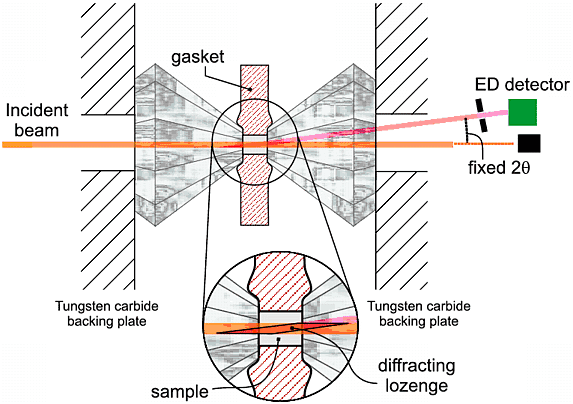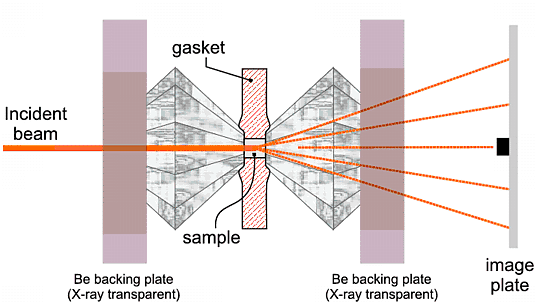 |
High Pressure
II. Energy Dispersive or Angle Dispersive? |
 Course Material Index
Course Material Index
 Section Index
Section Index
 Previous Page
Previous Page
 Next Page
Next Page
Energy Dispersive or Angle Dispersive?
The DAC was originally used in the so-called angle dispersive diffraction (ADD)
mode in which Bragg's Law, λ = 2d sinθ, is
fulfilled by using a fixed X-ray wavelength, λ, and scanning in angle,
θ: this mode has already been discussed many times in the course. When
intense near-parallel synchrotron X-rays became so readily available during the
1980's, many DAC practitioners turned to an energy dispersive diffraction (EDD)
mode, in which the diffraction angle, θ, is fixed and rather Bragg's Law
is fulfilled by measuring the diffracting photon's wavelength using an
energy-dispersive detector: this mode has also been already discussed, in the
Synchrotron section. The reasons for this switch were obvious:
- the fixed geometry meant that the window around the DAC could be kept
small;
- the white synchrotron X-ray beam was intense;
- EDD patterns could be collected relatively rapidly.
However the advent in the 1990's of the image plate detector changed this
perspective (image plates were discussed in the Synchrotron section, and again
later in the Detectors part of this section) and we have witnessed a
return to the ADD-mode of operation of DACs. The basic differences of such
operation are illustrated below:
 Course Material Index
Course Material Index
 Section Index
Section Index
 Previous Page
Previous Page
 Next Page
Next Page



